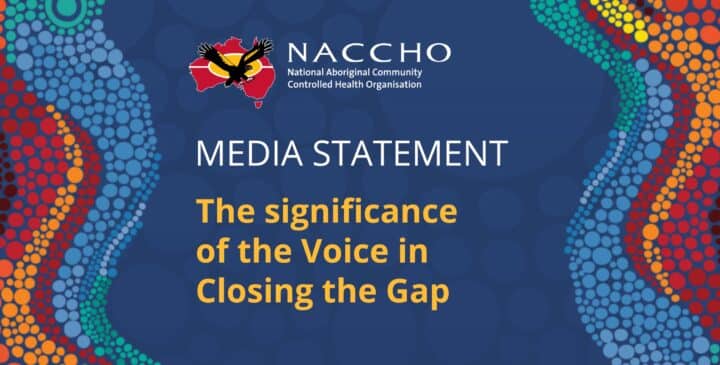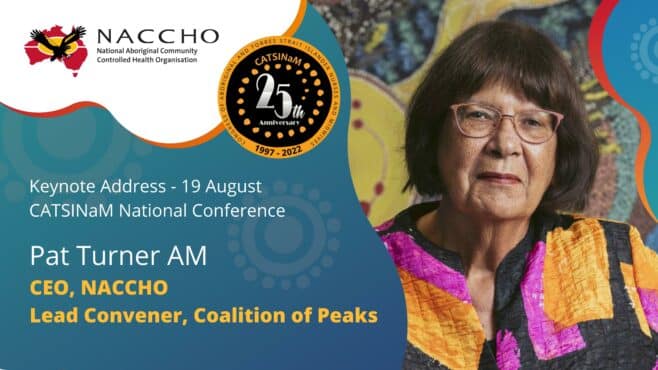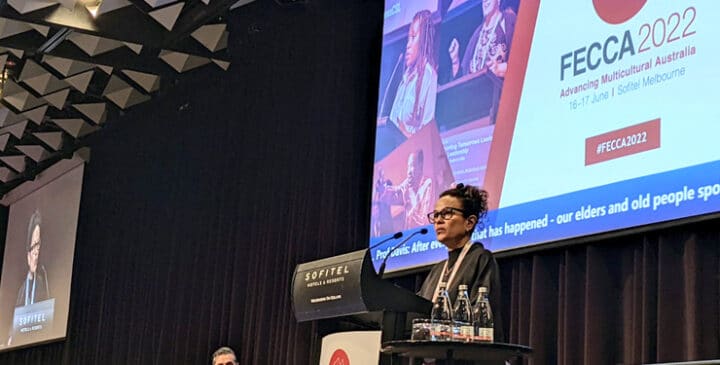

Close The Gap Reflections – 10 Years On
The gap in life expectancy between Aboriginal and Torres Strait Islander peoples and non-Indigenous Australians is widening, not closing.
States currently spend $2 per Aboriginal and Torres Strait Islander for every $1 for the rest of the population whereas the Commonwealth in the past has spent only $1.21 per Aboriginal and Torres Strait Island person for every $1 spent on the rest of the population. NACCHO calls for the Commonwealth to increase funding to Close the Gap.
The originating Close the Gap Statement of Intent – between the Government of Australia and the Aboriginal and Torres Strait Islander Peoples, supported by non-Indigenous Australians and Aboriginal and Torres Strait Islander and non-Indigenous health organisations – was never truly adopted and the Close the Gap strategy has only been partially implemented.
Underfunding in Aboriginal and Torres Strait Islander health services and infrastructure has persisted. Funding is not based on need and service gaps, has been cut and in some cases redirected through mainstream service providers.
The role Aboriginal and Torres Strait Islander peoples and Aboriginal Community Controlled Health Organisations as being the experts in their own development and health needs is not always recognised.
A health equality plan was not in place until the release of the National Aboriginal and Torres Strait Islander Health Plan Implementation Plan in 2015, and this is not funded.
There has not been a sufficient and properly resourced plan to adequately address the social determinants of health.
The framework underpinning the Close the Gap strategy – a national approach, leadership, increased accountability, clear jurisdictional roles and responsibilities between the Commonwealth and jurisdictions, and joint funding agreements through National Partnership Agreements – has unravelled and in some instances has been abandoned altogether.
The fragmented approaches of the past have returned – no long term funding and development plans, differing commitment and approaches from states, and policy decision making is highly centralised.
The relationship between Aboriginal and Torres Strait Islander peoples and governments is strained. The goodwill, forgiveness and openness generated by the Apology to the Stolen Generations and the Close the Gap commitments have been undermined by the Indigenous Advancement Strategy and its associated funding cuts, the defunding of the Congress, and the lack of genuine partnership and listening to Aboriginal and Torres Strait Islander peoples, highlighted through the dismissal of the Uluru Statement.
Widening mortality gaps require urgent and radically different action.
The only way to Close the Gap in health outcomes is with the full participation of Aboriginal and Torres Strait Islander peoples and their representative bodies in all aspects of their health.
There needs to be an absolute commitment to evidence-based policy, created in genuine partnership with Aboriginal and Torres Strait Islander peoples.
Aboriginal Community Controlled Health Organisations achieve better results for Aboriginal and Torres Strait Islander peoples, at better value for money, and should be the preferred provider for government funded health services for Aboriginal and Torres Strait Islander peoples.
The myth of overfunding needs to be challenged and overturned. Conservatively, Aboriginal and Torres Strait Islander peoples have at least twice the per capita health need of the rest of the population due to higher levels of illness and burden of disease. Funding should be allocated based on relative need.
Service and health infrastructure gaps need a long term funding plan. The gap will not be closed whilst significant service gaps persist.
Increased funding is needed for Aboriginal Community Controlled Health Organisations to expand in areas where there is poor access to health services and increased burden of disease, and to grow their capacity and respond to mental health, disability and aged care needs.
The National Aboriginal and Torres Strait Islander Health Plan Implementation Plan should be fully costed and implemented without delay.
The ‘refresh’ process needs to give Aboriginal and Torres Strait Islander peoples and their representative bodies and peak organisations a genuine say of the policy going forward. The Council of Australian Governments need to chart a way forward where Aboriginal and Torres Strait Islander peoples and their national service and representative organisations can come together to agree a refreshed approach.
The current Close the Gap health targets should be maintained – they serve to focus the nation, increase our collective accountability, and while ever deficits in our life outcomes and opportunities persist we should talk about them.
Complimentary targets could be added in agreement with Aboriginal and Torres Strait Islander health leaders and their peak bodies to focus effort and accountability on inputs that support the achievement of the health targets. Additional targets could also focus on the determinants of health.
Persistent and unwavering effort from COAG, in genuine partnership with Aboriginal and Torres Strait Islander peoples and their representative and peak organisations, is needed to Close the Gap.
Media contact: Julian Fitzgerald 0413 982 224

